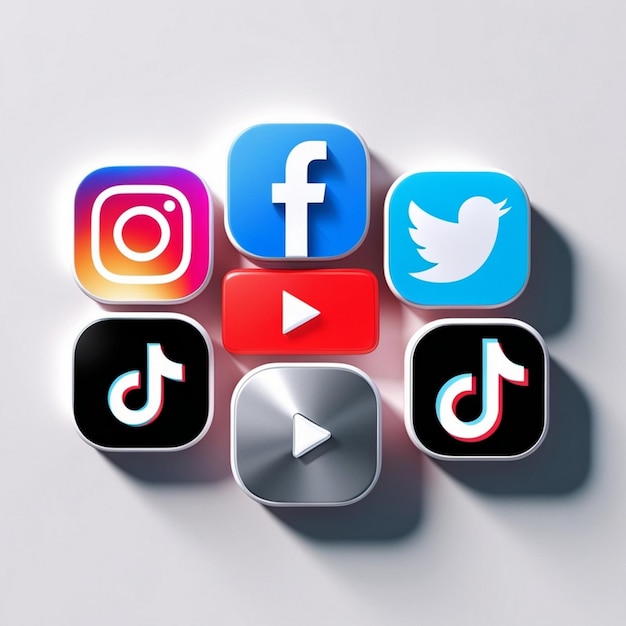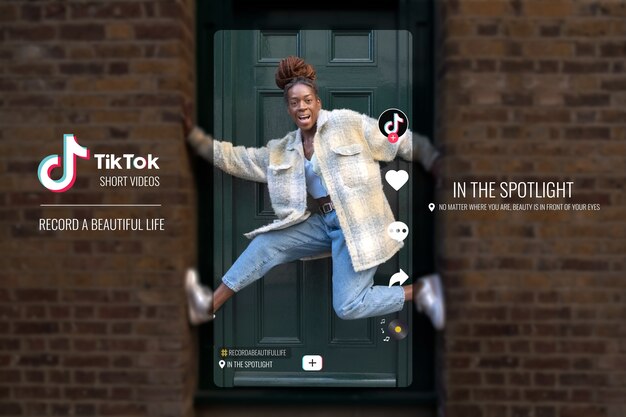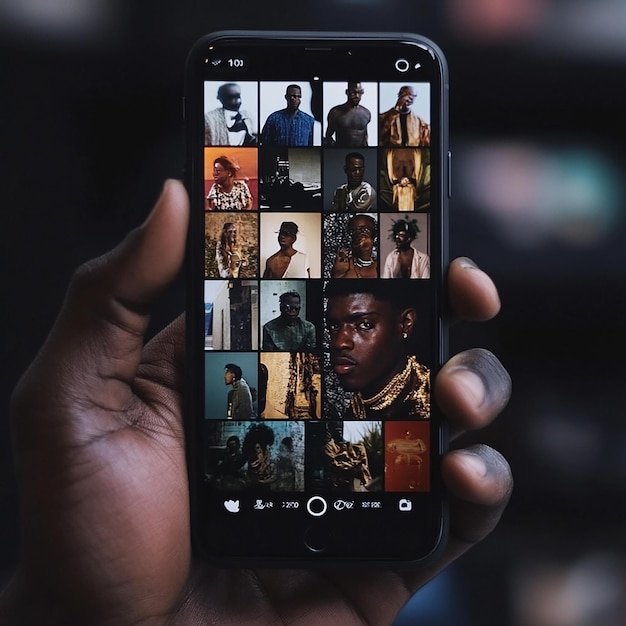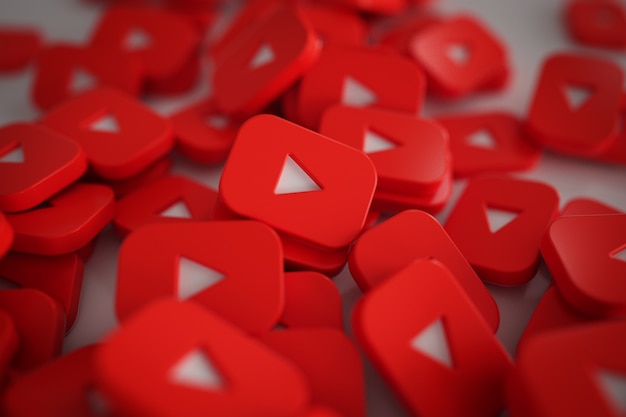

The battle to win on social media is a familiar one for content creators, brands, and businesses worldwide. You may have the perfect content, but if the algorithm isn’t in your favor, reaching your audience can feel like an uphill climb. In this post, we’re going to break down the specific algorithm challenges on TikTok, Instagram, Facebook, and YouTube—and more importantly, how to beat them.
We’ll take you step-by-step through actionable insights and feature a case study on Annie, a Nigerian importation business owner, who cracked the algorithm code and turned her struggles into success.
Attention: The Algorithm Dilemma
The term “algorithm” has become a buzzword, especially when we talk about social media. But what does it really mean?
At its core, an algorithm is the system that decides what content to show users based on their behavior on the platform. Each platform uses its own unique algorithm, constantly evolving to prioritize engaging and relevant content. Here’s where the challenge lies—understanding the behavior these algorithms reward and tailoring your content accordingly.
Let’s explore the challenges each platform presents.
TikTok’s For You Page: Cracking the Code

TikTok’s “For You” page is where the magic happens. But the algorithm remains elusive for many creators. TikTok prioritizes content that users are likely to engage with, based on previous interactions, hashtags, video completion rates, and even trending sounds.
Pain Point:
Creators often struggle to get their videos featured on the “For You” page, limiting their reach. Annie, our case study, found her views stagnant, regardless of the quality of her content. Her imports business, which thrived on trending TikTok videos, saw engagement plateau as her content failed to be surfaced to a wider audience.
Solution:
- Leverage Trending Sounds and Hashtags: TikTok rewards those who keep their finger on the pulse of trends. Annie began using trending sounds in her videos to tap into viral moments, significantly boosting her reach.
- Prioritize Short, Engaging Videos: TikTok’s algorithm favors videos that are completed, so keeping your content short and engaging right from the start is key. Annie shortened her tutorials to 15-second snippets, improving her video completion rates.
- Consistency is Key: Posting consistently and experimenting with the times of day she posted videos helped Annie gain traction. She developed a schedule based on her audience’s active times.
Instagram’s Reels and Posts: Maximizing Reach

Instagram’s algorithm has shifted its focus heavily toward Reels in recent years, with the aim of competing with TikTok. The platform prioritizes content that encourages engagement through comments, saves, and shares.
Pain Point:
Many small businesses find their engagement rates drop when they don’t post Reels, or when their Reels lack early interaction. Annie faced this issue when her static posts failed to perform, leaving her frustrated.
Solution:
- Create Reels With a Purpose: Annie learned that Instagram favors Reels that hook viewers within the first 3 seconds. She incorporated “before and after” footage of product imports, which quickly caught the attention of her audience.
- Encourage Saves and Shares: Content that provides value—like tutorials or how-tos—encourages users to save it for later. Annie started creating educational Reels that offered importation tips, driving saves and increasing her reach.
- Engage in Conversations: Instagram’s algorithm also takes your engagement into account. Annie made it a habit to reply to every comment and engage with her followers’ content, signaling to Instagram that she was an active and valuable participant in the community.
Facebook’s News Feed: Paid vs. Organic Reach

Facebook’s algorithm has long been criticized for favoring paid content over organic posts, prioritizing what it thinks users want to see. The platform rewards content that sparks meaningful interactions, such as comments and long-form posts.
Pain Point:
Annie noticed her organic posts on Facebook were being buried by ads, leading to significantly less reach.
Solution:
- Optimize for Engagement: Annie shifted from just posting product ads to creating conversation-starting posts. By asking her followers questions and encouraging them to share their experiences with imports, she created a community around her brand.
- Use Facebook Groups: Groups are prioritized on Facebook’s algorithm. Annie started a community group focused on importation tips, which quickly became a hub for interaction. This also funneled traffic back to her business page.
- Boost High-Performing Organic Posts: While Facebook may prioritize paid content, boosting an already successful organic post can help push it further. Annie started allocating a small budget to boost her best-performing posts, ensuring they reached a wider audience.
YouTube’s Recommendation Algorithm: The Path to Visibility

YouTube’s algorithm is unique in that it values both user engagement and video metadata (like titles, tags, and descriptions). The platform focuses on two primary types of recommendations: personalized content on the homepage and suggested videos on the sidebar.
Pain Point:
Annie’s YouTube channel wasn’t gaining traction because her videos weren’t showing up in recommended feeds.
Solution:
- Optimize Metadata: Annie realized her video titles and tags weren’t optimized for search. After using AI-driven tools to research trending keywords related to importation, she restructured her video metadata to align with what her audience was searching for.
- Increase Watch Time: YouTube prioritizes content that keeps users on the platform for longer. Annie began creating longer-form videos with high retention rates by incorporating stories and real-life experiences into her content.
- Use Playlists to Your Advantage: Playlists are a way to increase watch time by grouping related content. Annie created playlists of her tutorials, encouraging viewers to watch one video after another, boosting her visibility in the algorithm.
AI-Driven Content Strategy Tools

At Circlehq, we emphasize the importance of using AI tools to enhance content creation and strategy. Here are a few tools Annie used to streamline her efforts and beat the algorithm:
- Hootsuite: This scheduling tool helped Annie plan her content in advance, ensuring consistency across TikTok, Instagram, Facebook, and YouTube.
- BuzzSumo: Annie used BuzzSumo to find trending topics and keywords relevant to her business. This allowed her to stay on top of the latest industry trends and tailor her content accordingly.
- Later: As an all-in-one marketing platform, Later helped Annie manage her social media content and provided insights into the best times to post, maximizing engagement.
- VidIQ: This YouTube-specific tool helped Annie optimize her videos for search by analyzing keyword trends and providing video analytics. By adjusting her titles, descriptions, and tags, Annie saw a steady increase in her views.
Take Control of the Algorithm with Circlehq
Understanding and optimizing for algorithms can feel overwhelming, but as Annie’s journey shows, it is possible to crack the code with the right strategy and tools. Whether it’s mastering TikTok’s “For You” page, Instagram’s Reels, or YouTube’s recommendations, Circlehq can help you optimize your content strategy and reach your target audience.
Ready to win the algorithm game? Contact Circlehq today for personalized strategies that will take your brand to the next level.
Subscribe to our newsletter



